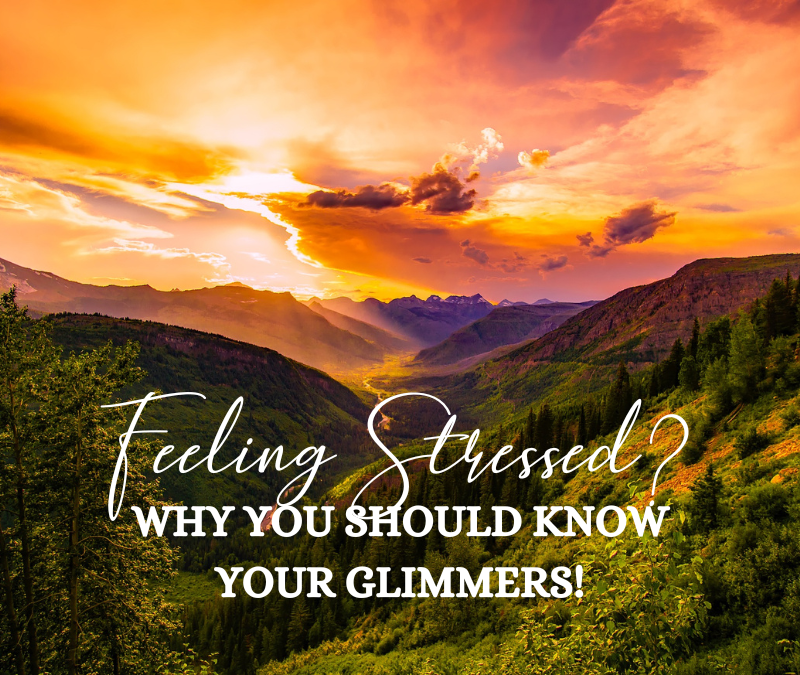Built to help women have a 360° approach to health through perimenopause to post-menopause.
welcome to MY BLOG
Feeling Stressed? Why You Should Know Your Glimmers!

November 3, 2022
Now you must be wondering, what are glimmers? Well, they are basically the opposite of your triggers and they’re equally as important to understand.
Your everyday experiences can have an effect on your mental health, physiology, and even on your mood. This is why among those experiences, clinicians have come with the term, “Trigger” to describe any event or stimuli that causes us to feel anxious and “Glimmers” to describe things that make us feel safe and sound.
This isn’t a new thing. In fact, it was developed by Dr. Stephen Porges in the 1990’s within the Polyvagal theory.
The science behind
Since we have mentioned a theory, let us also find out how the science behind works in all this.
Whenever we are conscious we are constantly analyzing our surroundings whether we are aware of it or not. This is so that we are always prepared whenever there’s danger or anything we have to be careful of.
This is especially true whenever we are outside. We are subconsciously asking ourselves, “ Is this place safe?”, “Do I have an exit?”, or “Does this person pose any threat to me?”.
Sometimes people call this our sixth sense, but sometimes it’s also referred to as neuroception. This is incredibly useful for our minds and body to be able to react to danger as quickly as possible.
So whenever our brain recognizes a threat or a trigger, our fight-or-flight instinct kicks in almost instantly. The opposite is true whenever we encounter our glimmers – our body relaxes and becomes more attuned to social interactions and we feel a lot better.
How do we identify triggers and glimmers?
Everyone’s triggers and glimmers can be drastically different. Sometimes we are not fully aware of what ours are. That is okay because it takes time to get to know yourself truly. However, once we are fully aware, we can better set ourselves up to be in better places where we can avoid triggers and be with more glimmers instead.
With that being said, here are some of the most common triggers:
- Anything that activates your fight, flight, or freeze response.
- Anything that produces adverse physiological reactions in you.
- Raised voices, anxiety about bills, watching the news, certain social media posts, deadlines, etc.
- Places, people, or things that make us feel in danger.
- Everybody’s triggers are different, but learning to identify our own can help us manage it better.
On the other hand, here are some things we should know about glimmers:
- Glimmers are anything or anyone that makes us feel safe and connected to everything around us.
- Glimmers can help us regulate our nervous system.
- Glimmers can be anything from a favorite TV show, a pet, a best friend, relaxing music, hanging out at the beach or at a park, or just having dinner with a loved one.
- Glimmers can be very subtle and this is why it can be very difficult to identify them. We need to experience them firsthand in order to honestly say that they are our glimmers and they make us feel like everything is going to be okay.
Bottom line
Being able to identify our triggers and glimmers won’t make it magically disappear. Our world and everyday life are unpredictable and as such, there may be times when we encounter our triggers. However, knowing both our triggers and glimmers is a game-changer and can help protect us a lot in the future. This is because we can then redirect our attention to the things that make us feel safe and protected rather than the things that make us feel in danger.
“Well-being is not simply the absence of problems, but also the presence of strengths.”
Louise xx
Leave a Reply Cancel reply
I have a reputation as a compassionate and innovative therapist who produces rapid and lasting changes with my clients. Are you ready to become my next success story?
Website Designed W/ Love By Traveller By Trade
Copyright © 2021, Louise The Therapist
Privacy Policy